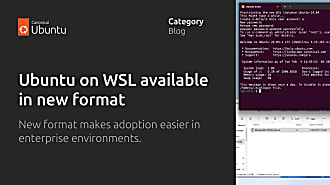Canonical
on 15 October 2010
A space odyssey
Time flies and it’s already time for our next blog entry on the design of the Ubuntu font suite. Below my colleague Fabio Haag explains the joys of spacing and kerning.
Type designer from past to present all agree on one thing: the spacing between the letters is as important as the letters themselves, if not more so. The careful balance between black and white, form and counter form, is vital for creating a homogeneous texture which assists a pleasant reading experience.
Many font users today don’t realise that the spacing of a font is optimized for its primary usage.
In the days of hot metal the design of a typeface, and its spacing, differed depending on size meaning that the letters would be more tightly spaced at larger sizes whilst being set looser at small sizes. Today, a font normally has a single master design in a vector format that is scaled up and down in a linear fashion. Like the designers of old we, too, are aware of the problems this causes but have to rely on users to make the right call in regards to spacing.
The Ubuntu fonts are spaced for text sizes, their optimal range being between 9 and 14 point. If they are used at display sizes applying minus tracking is necessary to lock the characters together as shown below. There are no hard and fast rules about how much to track for display sizes. That again depends very much on how large the type is set – 24pt requires different values to 240pt – and what exactly the typography is trying to achieve within the context of a design project.
Since we are talking about spacing it is also important to mention kerning. Firstly, they are not the same thing: Spacing refers to the general space between characters, the left and right sidebearing, the white space that each character to the left and right. Spacing can be adjusted using tracking options in most applications. Kerning refers to adjusting the white space between specific character pair combinations as illustrated below.
Our design team spends considerable time spacing and kerning the fonts as we strongly believe that a poorly spaced font is unusable however beautiful the individual letters, and to keep kerning pairs to a minimum without compromising an even texture. This ensures that the Ubuntu font suite can be used successfully in office applications that may not necessarily support kerning, as much as in professional design programs which make full use of all the features that the fonts present.
Currently, the Ubuntu font suite supports two kerning schemes: a flat kern table that lists every pair combination in the font, and class kerning using the ‘kern’ OpenType feature. Programs accessing the flat kern table will find that accented pair combinations such as ‘VÃ’ are not supported. Unfortunately, flat kern tables do not support the sheer number of pair combinations, over 50,000, in the current Ubuntu font suite. Therefore only the base combinations are supported. However, this is not an issue with the ‘kern’ feature that supports all combinations and applicatinos supporting OpenType will enjoy all the kerning benefits.





